Cross-selling and upselling are two powerful tactics to boost your revenue, upgrade existing customer experience, and provide value for first-time visitors of your website. Read on to find out how these strategies work topped up with cross-selling and upselling examples from various companies.
Exploring cross-selling vs. upselling
There is a lot of confusion surrounding cross-selling vs. upselling strategies. To better understand their differences, let’s first refer to their basic definitions.
Cross-selling is an eCommerce practice where retailers offer a user additional products that complement those that they have already purchased or are about to purchase. Upselling, in its turn, is the strategy that consists of suggesting a user more expensive or upgraded products compared to those that they have initially chosen.
To draw a clear line between the two strategies, let’s take a look at three different scenarios and the corresponding cross-selling and upselling solutions to them.
| Case |
Cross-selling example |
Upselling example |
| A user has added a pair of sneakers to their cart on your website |
Coming up with product recommendations, such as socks, shoelaces, or shoe care products |
Offering a pair of similar, but more expensive sneakers from the new collection |
| A user wants to buy a cell phone from your company |
Suggesting a screen protector, phone case, or headphones |
Offering a phone with a bigger screen, better camera, upgraded features, and, thus, a higher price |
| A user is about to book a hotel room for their vacation on your website |
Coming up with ideas for sightseeing tours, transfer options, or other services your company can offer |
Offering higher-ranking hotels or more sophisticated suits at the hotel the user has chosen |
Here are just a few benefits the right use of both techniques can bring you:
Hot spots to leverage cross-selling and upselling
Before we dive into the on-topic tips, check out a list of website and inbox spots to hit with your cross-selling and upselling deals:
For example, you can present additional purchase options in a pop-up window or a sidebar of your product page or add an image carousel to the bottom of your post-purchase email for customers to pay another visit to your website for more purchases.
See how Crate And Barrel used their confirmation email to provide customers with personalized product recommendations:
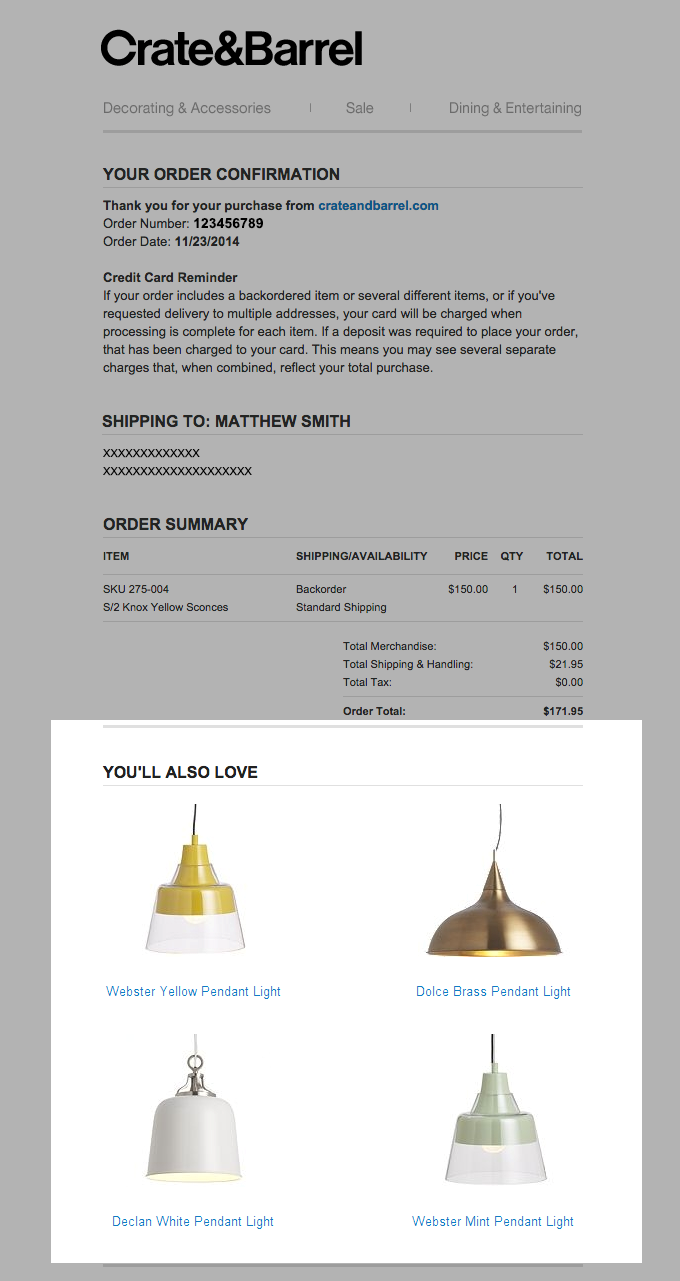 Transactional email with cross-selling from Crate And Barrel; source: Really Good Emails
Transactional email with cross-selling from Crate And Barrel; source: Really Good Emails
Now let’s proceed to cross-selling and upselling examples you can get inspiration from.
Cross-selling examples
It’s not just about selling as many things as you can — it’s also about creating a satisfying experience for your customers. Learn how to offer the most relevant products in the right place at the right time with these cross-selling examples.
Frequently-purchased-together items
Advise the customer about the ways they can complement their order with based on their purchase activity. iHerb, for example, shares the combination of products that are typically bought together with the selected item.
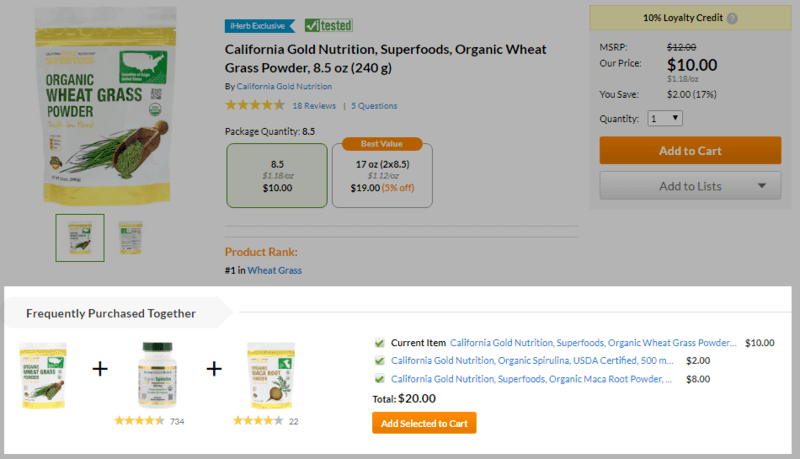 A bundle offer from iHerb
A bundle offer from iHerb
Recommendations
This is a bit more personalized approach but at its core lies the same principle: you offer additional items that will work well with the product your user is about to purchase.
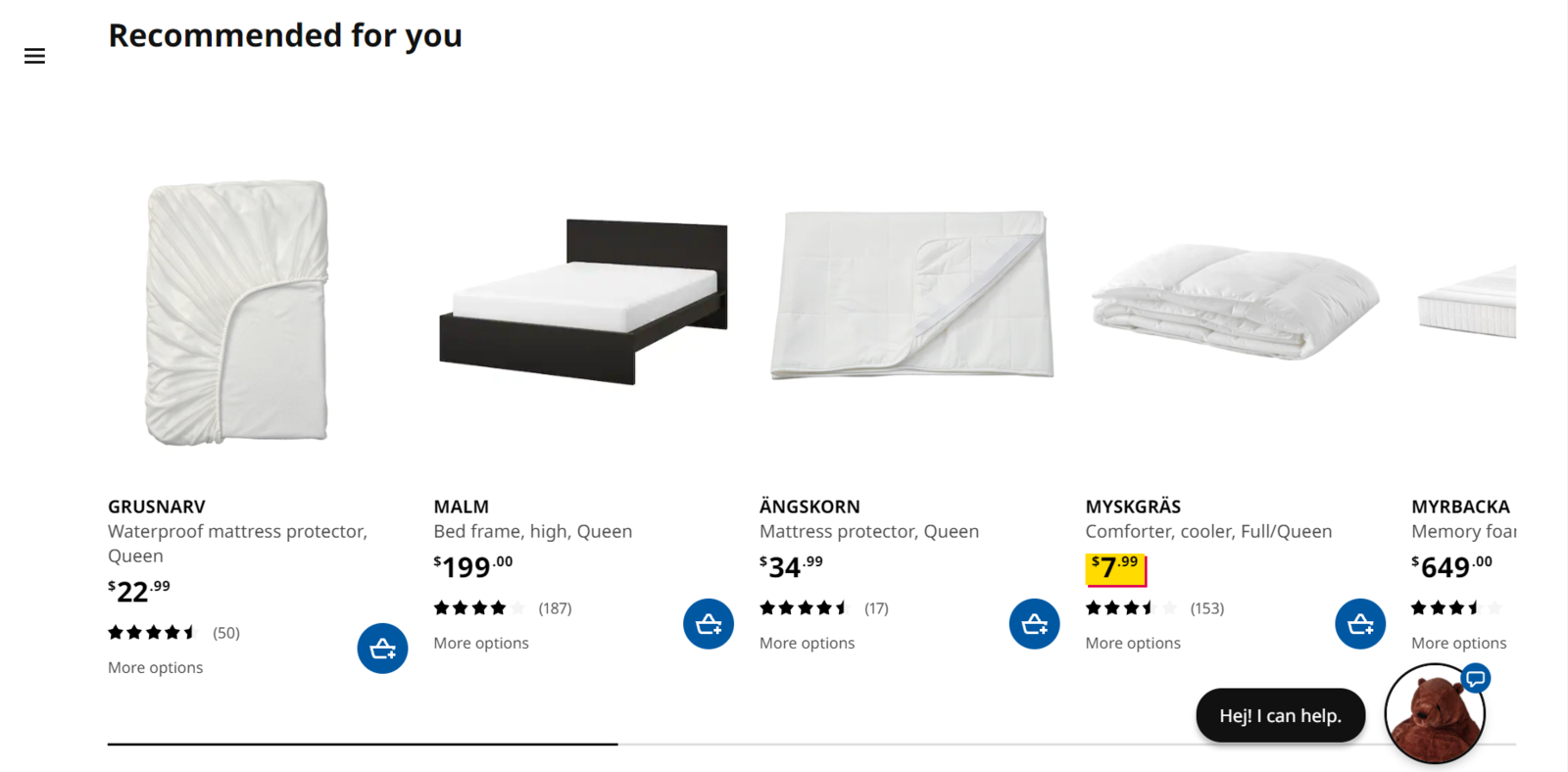 Recommendations often feel more personalized and relevant
Recommendations often feel more personalized and relevant
If you, for example, want to buy a mattress from IKEA, you’ll likely see a whole range of related products underneath it the second you add it to your cart. IKEA’s algorithms will recommend products that fit that exact mattress model, such as bedsheets, mattress protectors, bed frames, and so on.
Reminders
This cross-selling email example demonstrates that you don’t have to be pushy to sell more. Dollar Shave Club prefers an easy, informal approach. Their cross-selling emails are like gentle reminders pointed towards improving the customer’s shaving experience.
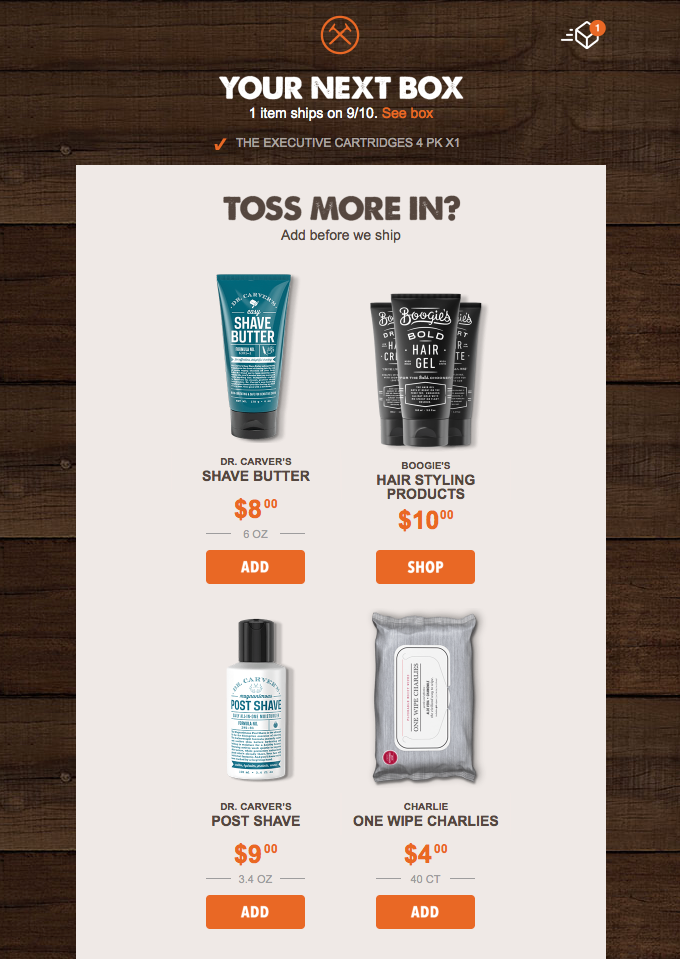 Try to cross-sell before your customer gets out of the purchasing mood; source: Really Good Emails
Try to cross-sell before your customer gets out of the purchasing mood; source: Really Good Emails
This “hey, don’t forget this” vibe creates a friendly mood and invites this email’s recipients to really consider tossing more nice post-shave and styling products in before they have been shipped.
Personalized suggestions
It’s hard enough to leave a bookstore with just one book in hand — it’s nearly impossible to purchase just one audiobook, especially when there are many hours of your commute to be filled with some kind of entertainment. Audible knows that and provides us with another great cross-selling email example.
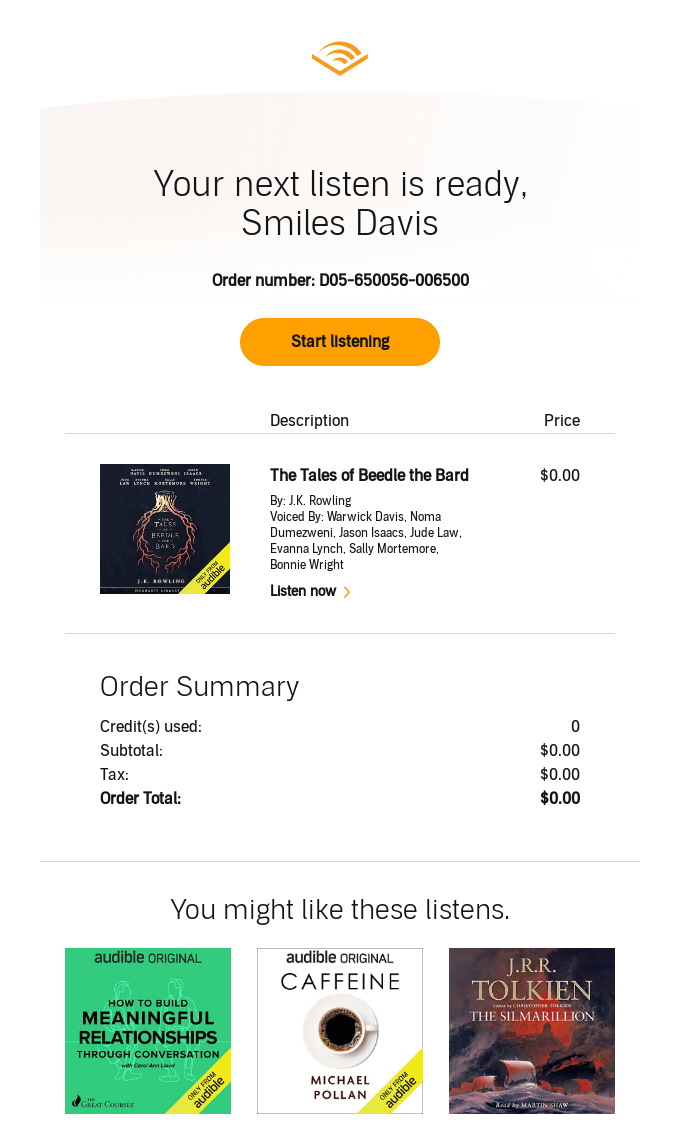 Offer your customers some specific suggestions; source: Really Good Emails
Offer your customers some specific suggestions; source: Really Good Emails
They offer their users audiobooks based on their listening history, and they do it just when the timing is right — when the user has just ordered something and is still in a buying mood.
Trial products
Offer users some trial products in return for their order. This is another cross-selling strategy iHerb use — they place this option at the checkout page, specifying the rating of the suggested items.
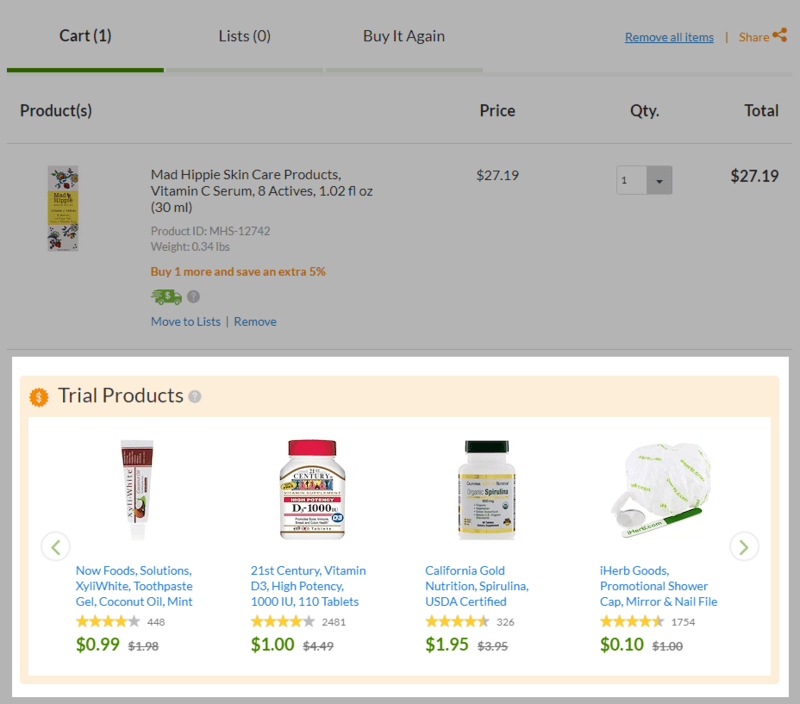 A trial product offer at iHerb checkout page
A trial product offer at iHerb checkout page
Additional services
Think of a list of goods or services that would go well with the current version of the product. The user is browsing for a tablet on your website? Come up with setup offers, so the customer is able to use their device right after the purchase.
Apple, for example, suggested accompanying the order with a special offer which prolongs the device repair coverage and guarantees 24/7 technical support.
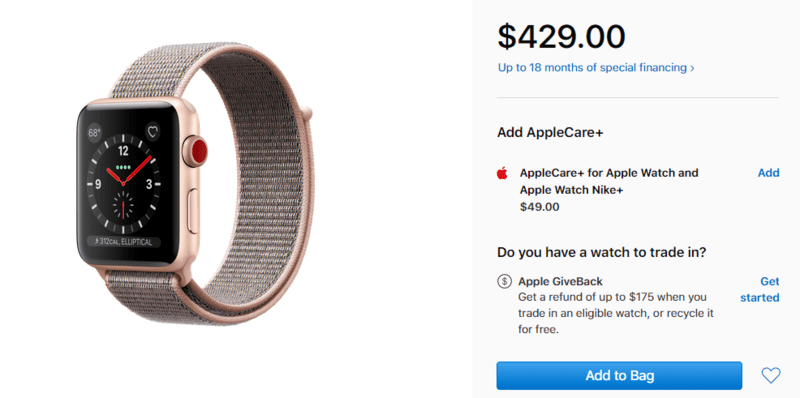 An offer with additional services from Apple
An offer with additional services from Apple
Combining cross-selling techniques
It feels like no one does cross-selling better than iHerb — chances are, you’ve witnessed your friends who shopped for one specific product and ended up receiving a box packed full of vitamins, supplements, and lotions they didn’t know they needed. Here’s how it happens.
 Create multiple cross-selling opportunities to increase your chances
Create multiple cross-selling opportunities to increase your chances
This single product page includes at least four cross-selling tactics: “Similar items to consider,” “Combo offer to save $3,” “Frequently purchased together,” and “Customers also viewed.” It’s near to impossible to proceed to the checkout without adding more products to your cart. But this tactic is only relevant if you have a wide range of products and can offer closely related items — completely random products have way less chance to pique the customer’s interest.
Now let’s jump to upselling best practices and see how various companies implement them.
Upselling examples
There are many ways to softly push your customers towards a more expensive purchase, but you always need to stay honest with them. Let’s learn how to do that with some real-life upselling examples.
Trade-in
Who wouldn’t want to get a new iPhone up to 80% cheaper in exchange for their old one? Trade-in is a brilliant upselling tactic that can entice even the most cost-conscious customers to buy the latest model. And it works for more than just expensive tech and cars — you can use the same method for upselling any new product if it’s possible to reuse, resell, or recycle the previous model.
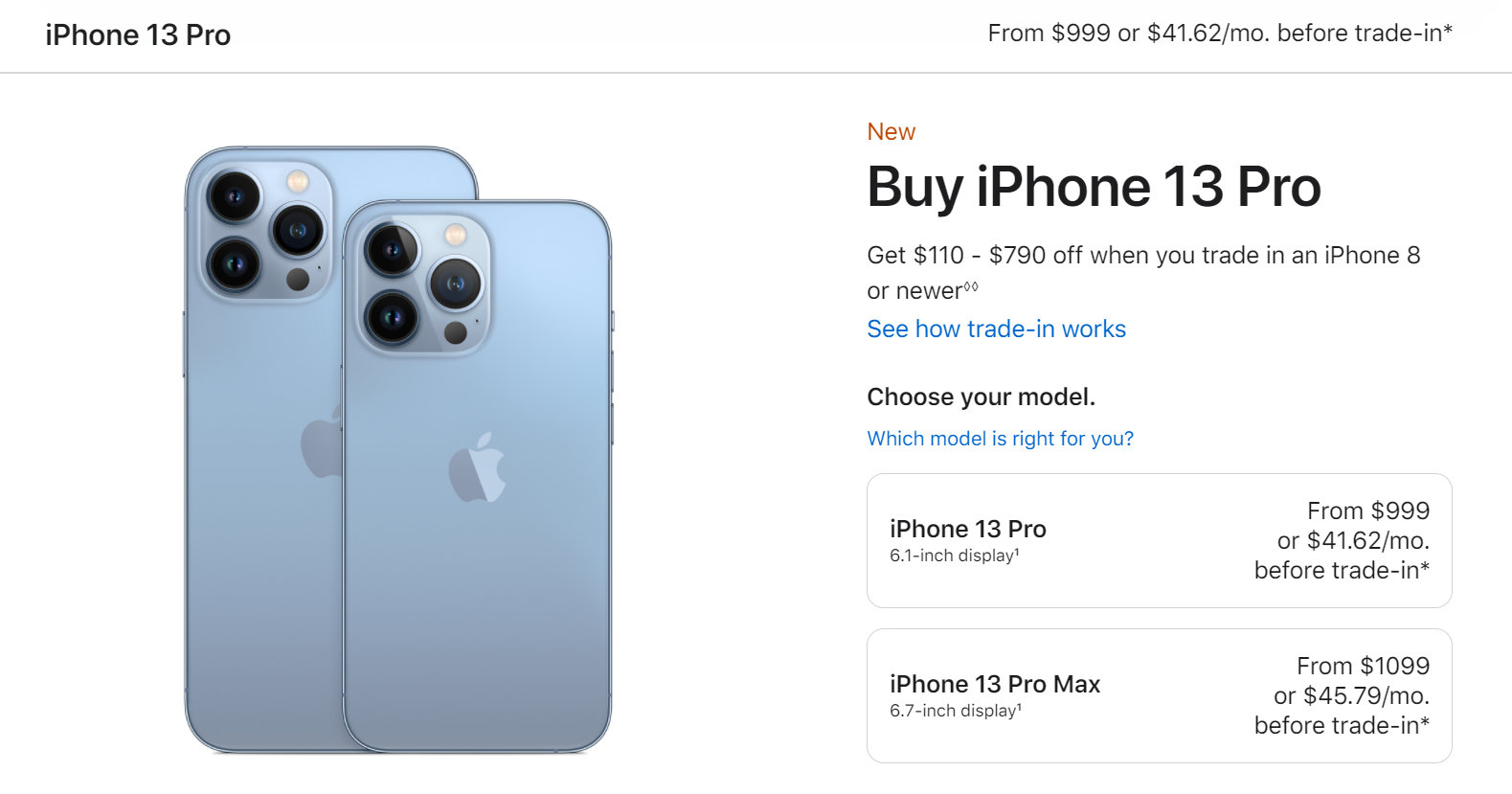 Apple uses trade-in to upsell new products
Apple uses trade-in to upsell new products
Trade-in is a way to appeal to buyers who are concerned about their environmental impact. Since smartphones can be partially recycled, it is more eco-friendly to give an outdated gadget away and get a significant discount than to pay the full price for a new iPhone and let the old one gather dust at home.
Offering the most expensive plan first
Wix provides us with a peculiar example — they list their plans in an unusual order, from most expensive to cheapest. The user’s attention inevitably goes to the VIP plan first and, therefore, Wix upsells instead of just selling. Users expect the first plan on the left to be the most affordable option, and this psychological trick can make them consider something they’d normally dismiss.
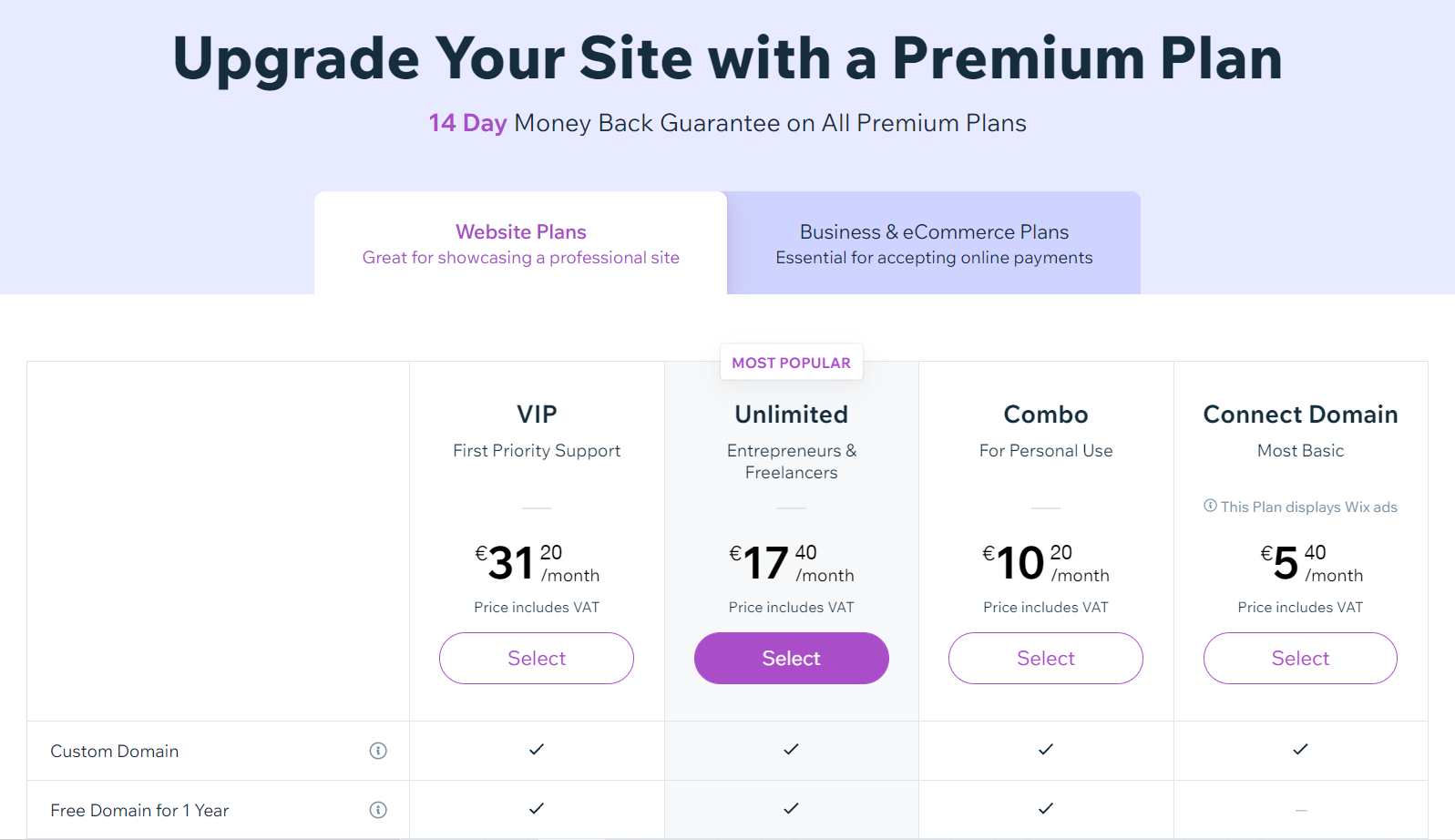 Wix upsells by making its premium plans more prominent
Wix upsells by making its premium plans more prominent
It’s a bold move since high prices can scare potential buyers off, but it’s a risk worth taking. This upselling example shows us that there is no need to be too salesy about it. What you need to do is let your customers consider your premium offer first and fall in love with its advanced features before they jump to the cheapest options.
Inducing urgency
Tickling your customers’ FOMO is not a sin. By creating urgency, you can help them overcome their doubts and take advantage of your offer while it’s still valid. Get inspired by this elegant upselling example from Evernote.
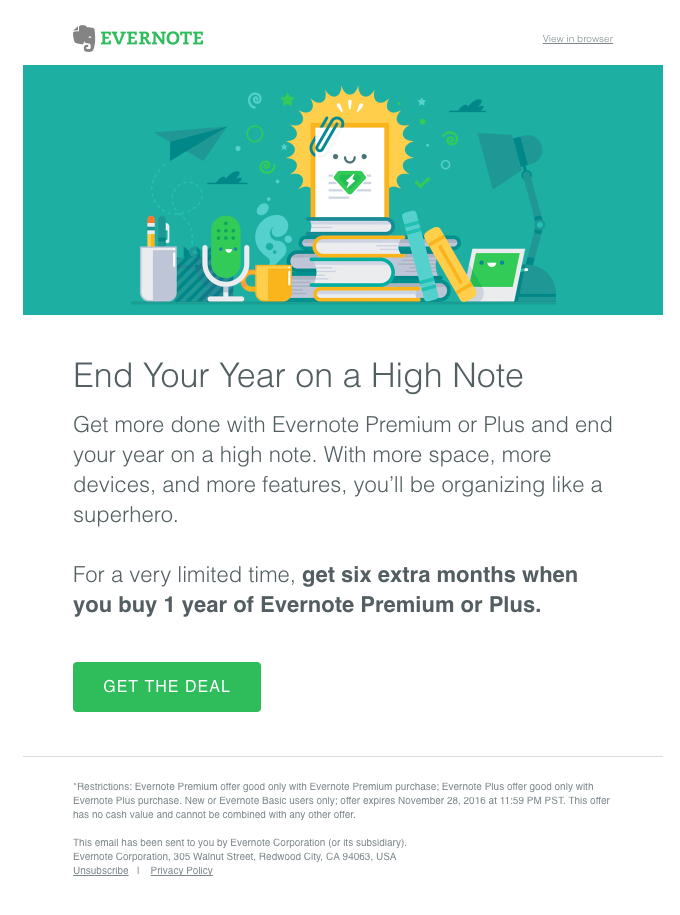 Evernote creates a sense of urgency to attract attention to its premium plans; source: Really Good Emails
Evernote creates a sense of urgency to attract attention to its premium plans; source: Really Good Emails
They briefly but clearly describe the benefits a user can enjoy after signing up for a premium plan. This email also mentions the offer expiration date, so there is no guessing game.
Rewards
Domino’s doesn’t like to waste time — the company uses every opportunity to exceed its customers’ expectations and sell more. Its reward system encourages consumers to buy more pizza to earn points and get nice free meals in return.
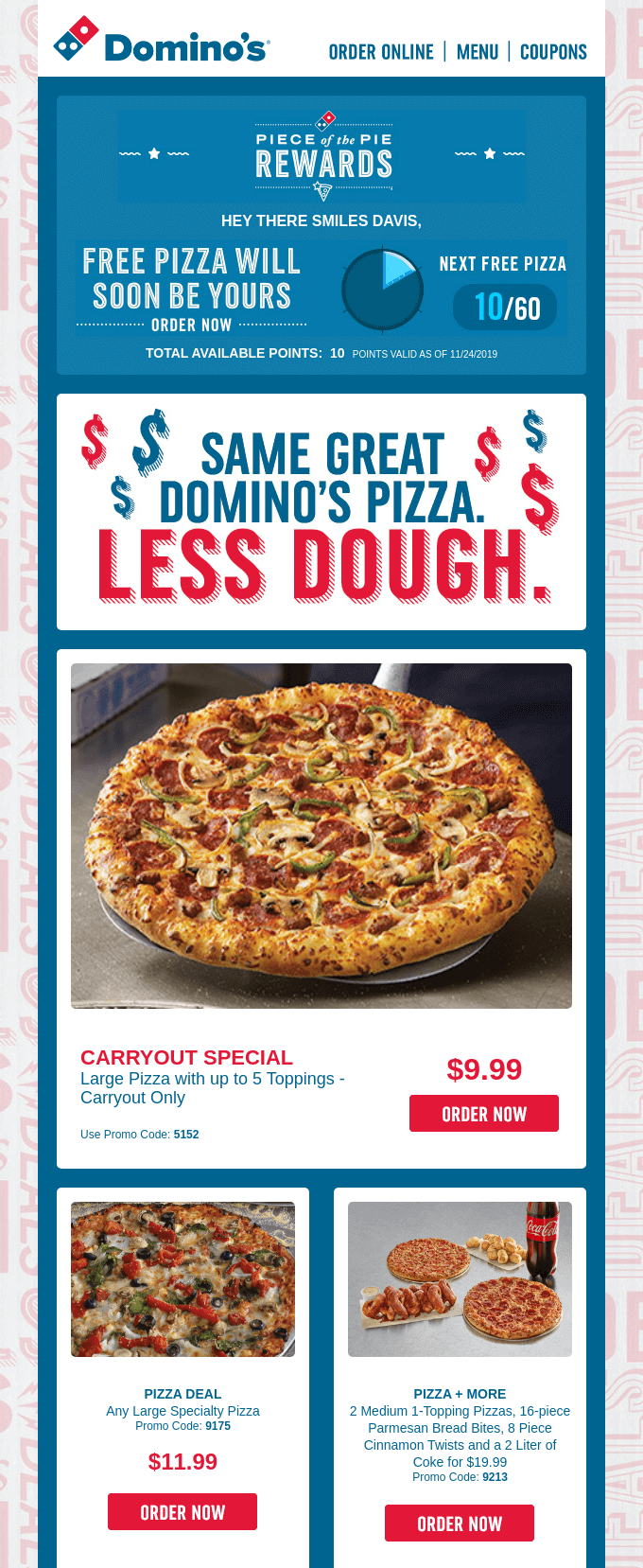 Loyalty programs can help businesses upsell; source: Really Good Emails
Loyalty programs can help businesses upsell; source: Really Good Emails
In case you’re new to upselling, this is the safest way to go — simply choose several similar products with better features and higher prices and put them on the product flypage. Lancome, for instance, adds items that are frequently bought by other users right at the checkout stage.
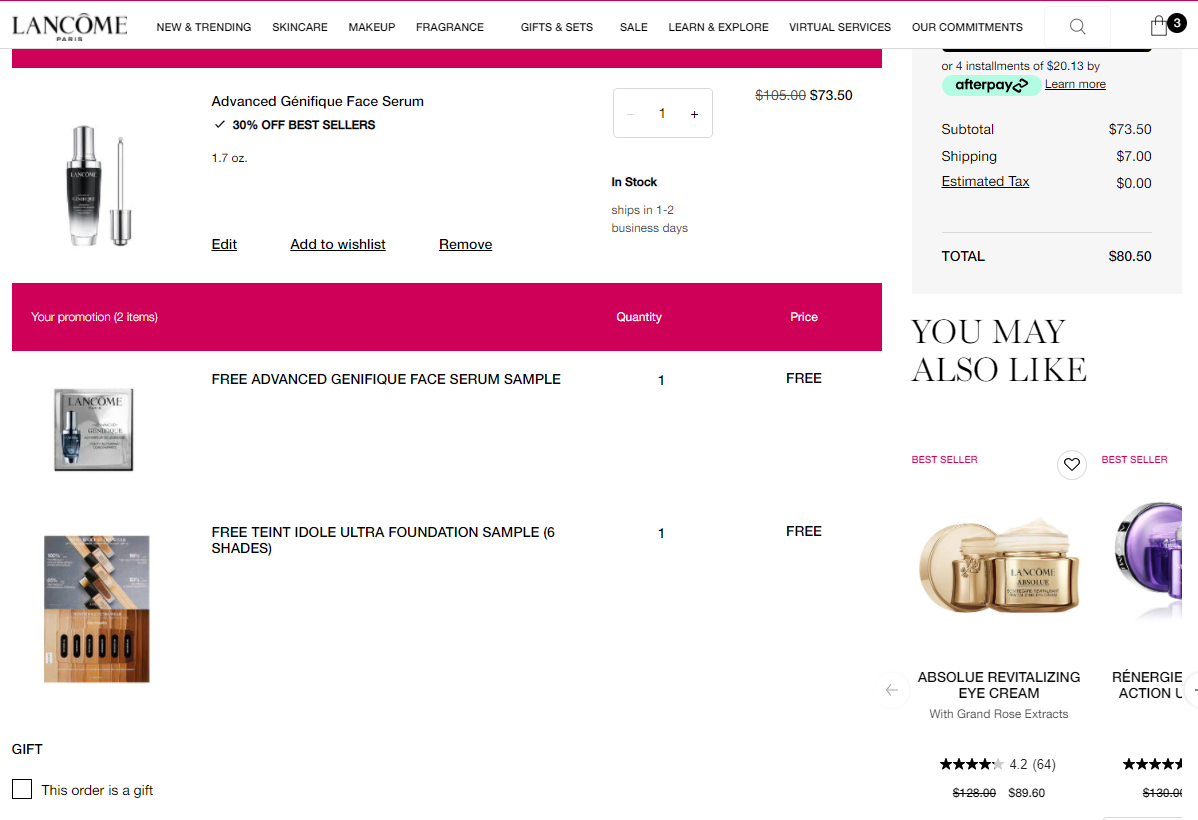 Offer more expensive and advanced alternatives at the checkout stage
Offer more expensive and advanced alternatives at the checkout stage
The checkout point is another location to feature additional products for upselling. Users don’t have to navigate somewhere else — you provide them with valuable recommendations while their order isn’t finalized yet.
Empathizing with customers
“We understand your needs, and we can help you.” This kind of approach is very helpful when your goal is to upsell any type of product or service. Here is how The Telegraph brings up that topic in its upselling emails encouraging users to buy a subscription.
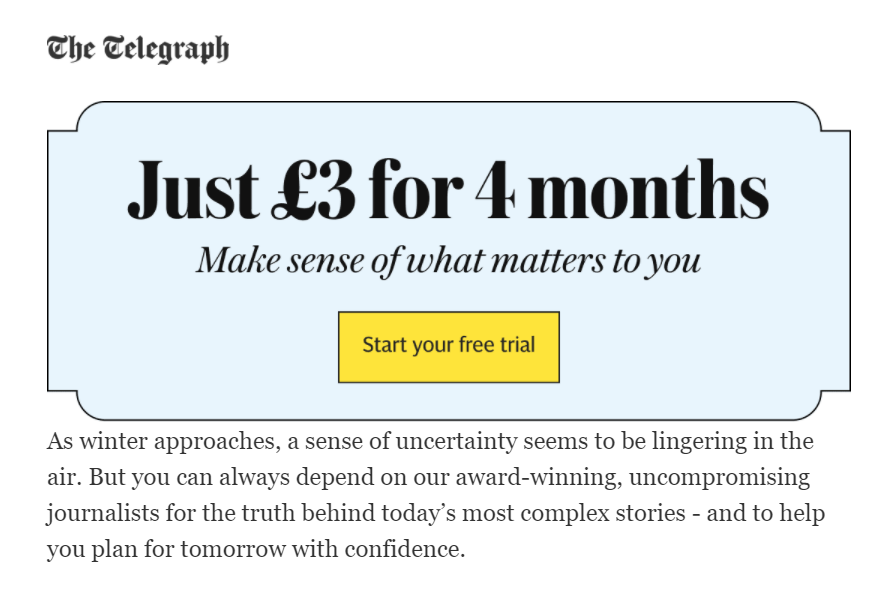 Use customer empathy to upsell and make your offer more desirable
Use customer empathy to upsell and make your offer more desirable
This is an effective yet respectful approach. You can offer a better product version by recognizing your customers’ needs and making them feel understood.
Free shipping
Expensive shipping is what typically keeps users from finishing their purchase. You could provide a free shipping option to motivate users to make a more expensive purchase.
This is what Clinique did in one of their emails. They offered a predefined total for free shipping, thus motivating a subscriber to take action with a freebie at the checkout.
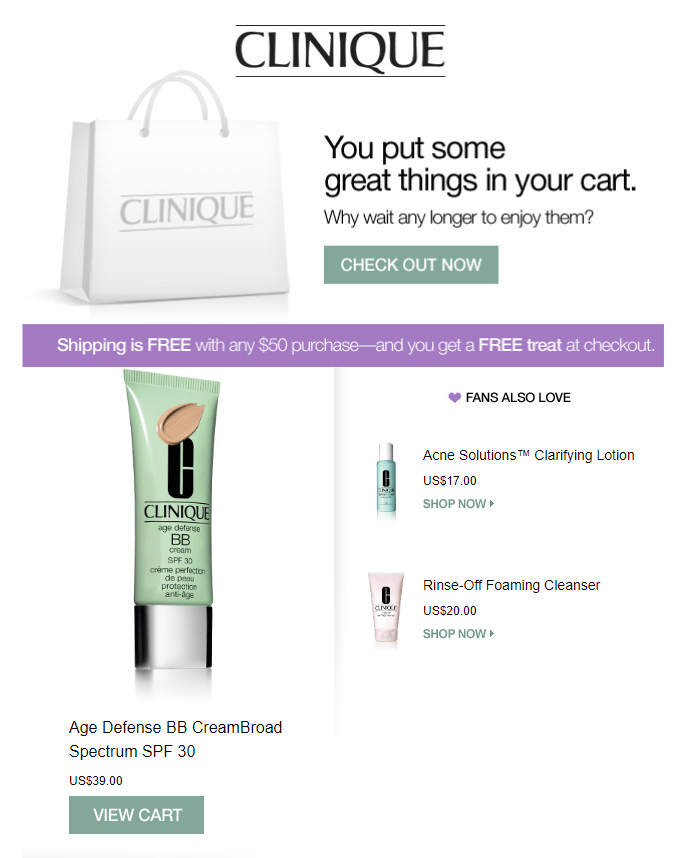 An email with upselling strategy in action from Clinique
An email with upselling strategy in action from Clinique
Comparison lists
Upselling works best when it shows how users will benefit by paying more. Present extra features available for more expensive options or provide the social proof. The beauty of this upselling trick is that the benefits you list outshine extra expenses for the user.
Elegant Themes, WordPress themes and plugins service, present available pricing plans within a comparison list. The company places the more expensive plan as the best option and outlines financial benefits the user will get from it — one-time payment and lifetime support.
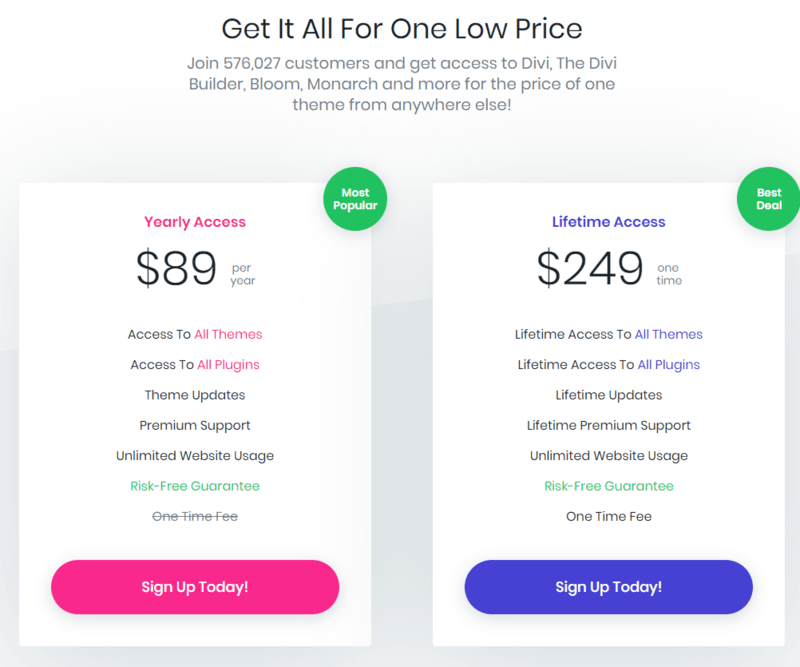 Upselling strategy used by Elegant Themes
Upselling strategy used by Elegant Themes
Yet no matter which eCommerce tactic you decide to use, you should understand how to use both with reason. Check out below-listed recommendations to get the most of cross-selling and upselling strategies.
Cross-selling and upselling tips
Let’s explore some basic cross-selling and upselling tips that will help you add value to your existing relationships with customers and drive more sales for your company.
Choose your goals
Improving your bottom line is a top reason to cross-sell and upsell. How about digging deeper: why are you doing this? Do you want to tell people about your new useful services, sell unpopular products or, on the flip side, promote the new arrivals?
Segment your audience
Would the female part of your audience be pleased to see beard care products in the recommended list bar? As the answer is obvious, consider segmenting your audience according to their age, gender, preferences, browsing history, or location to provide them with relevant offers in the future.
Stick to prices and quantity
If the user is browsing a $150 sofa, coming up with a $2500 alternative would be a bit irrational. Elevate the price by no more than 25%, choose several reasonable recommendations as to why the user should pay more, and present them.
Start with loyal customers
If you’re just starting out upselling and cross-selling, turn to your existing customers and ask them to share their insights about how you should implement these tactics on your website or in email marketing, providing the most active users with complimentary gifts.
Bottom line
Choosing between cross-selling and upselling is solely up to you and your marketing goals. By using these tips and inspiring examples, you’ll be able to build a marketing strategy that boosts your income and keeps your customers pleased. Once you are ready with your strategy, remember to turn to SendPulse to bring it to life.